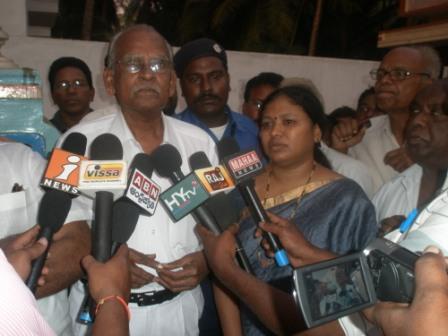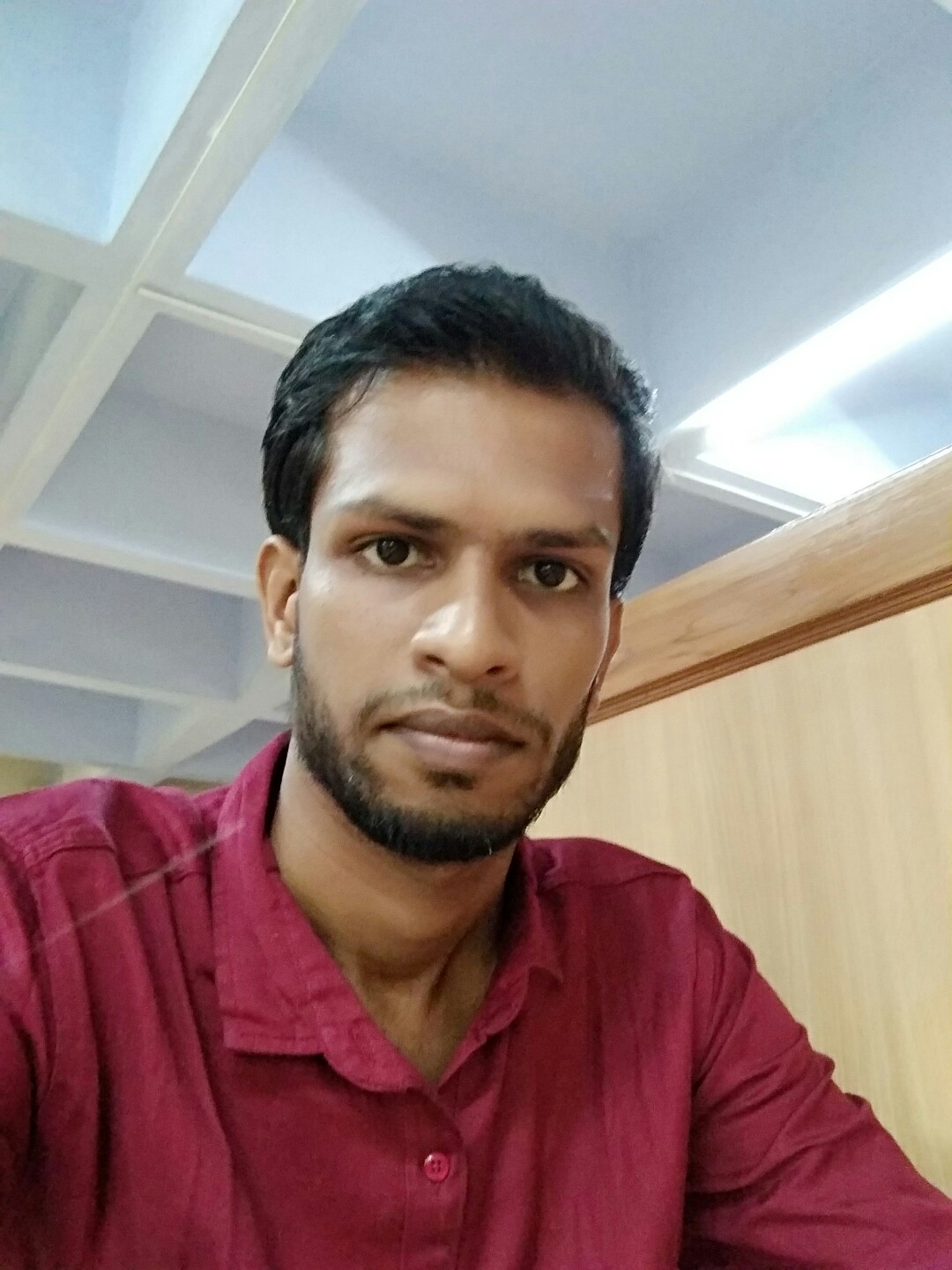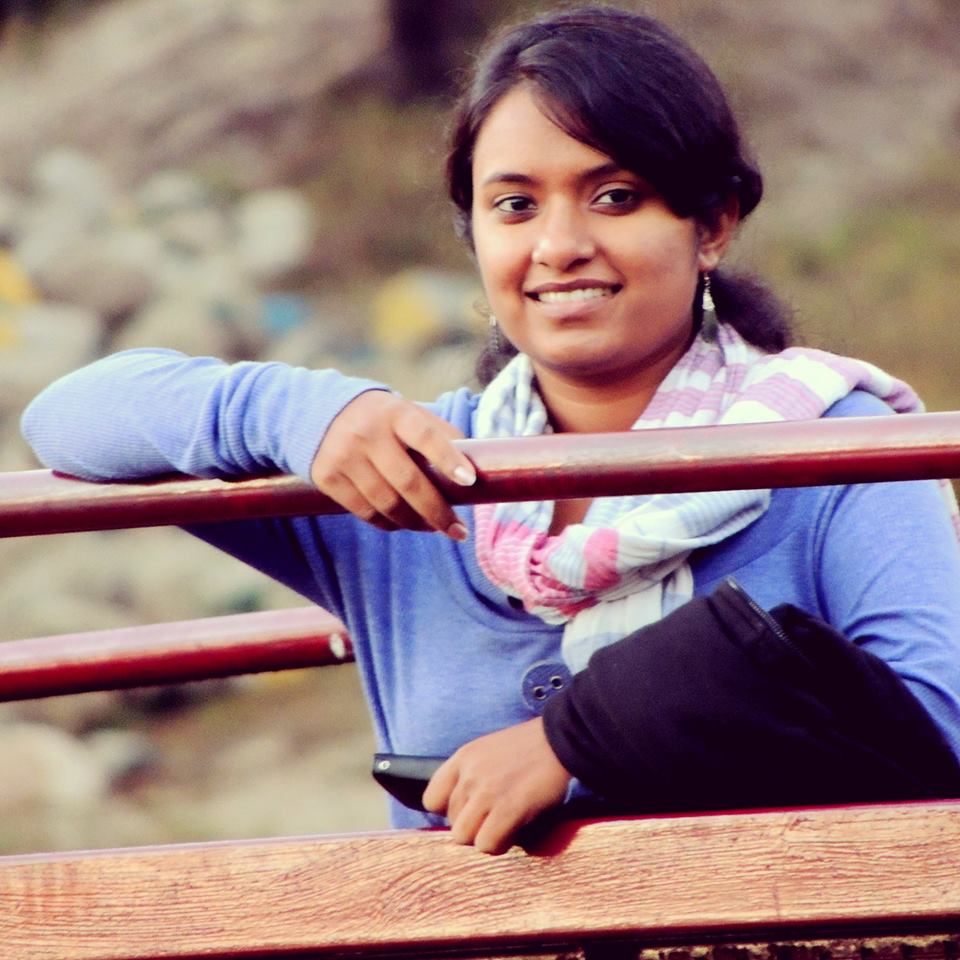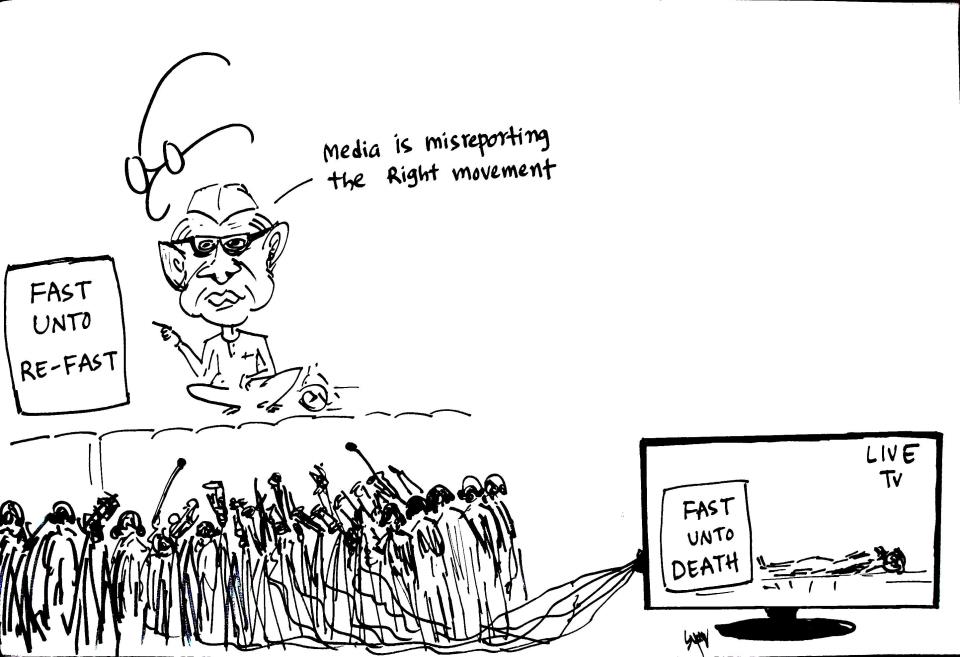Desecration of Ambedkar statues: Truth is the first casualty (Part II)
Continued from here.

In this concluding part on the issue of desecration of Dr Ambedkar’s statues in Andhra Pradesh, G Jhansi, of Dalit Sthree Sakthi, maps for us the morphing forms of atrocities on dalit assertions. In her analytical narrative of the complex caste politics that sustains such horrendous acts, she brings to us the powerful message of ‘We’ll do a Chunduru now’, the message of the Dalits who waged long, heroic battles against the perpetrators of organized killing and violence in places like Chunduru, Karamchedu, Pippara, Padirikuppam in the eighties and nineties, for justice. Symbolizing the Dalits’ resolve, tenacity and conviction in the Ambedkarite path of confronting caste oppression.
~~~
Round Table India: Would you say the local leaders had committed these acts, or were state level leaders or groups within the Congress involved? Now that it seems to have spread to Telangana too, considering statues were desecrated in Nizamabad and Ranga Reddy districts also.
G. Jhansi: It is our misfortune that caste has such strong roots that it is no surprise if such a trend spreads across regions or even states. So we cannot say conclusively that certain leaders were involved, but we can definitely say that state level leaders are involved in protecting the accused! That we can say with certainty!
It is the police investigation that should tell us who are the accused, but in defending the accused, state level leaders, Kapu leaders and all the dominant castes’ leaders are involved. That is certainly happening.
RT: You and Mr.Tharakam (of RPI) had gone there, protested..
 G. Jhansi: We went there, saw the situation, and gave a call for ‘Chalo Amalapuram’ on behalf of RPI, Dalit Sthree Sakthi and other organizations, took all necessary permissions, but it was not allowed ultimately. They took all measures, including arrests, to stop it. Yes, they might have stopped it because they were expecting tension, but they should also do the duties that they are expected to fulfill. Why do they think of shutting our mouths all the time? They stopped and checked every vehicle on that day.
G. Jhansi: We went there, saw the situation, and gave a call for ‘Chalo Amalapuram’ on behalf of RPI, Dalit Sthree Sakthi and other organizations, took all necessary permissions, but it was not allowed ultimately. They took all measures, including arrests, to stop it. Yes, they might have stopped it because they were expecting tension, but they should also do the duties that they are expected to fulfill. Why do they think of shutting our mouths all the time? They stopped and checked every vehicle on that day.
RT: But what do you think is the way out to stop these incidents from recurring?
G. Jhansi: If they had sincerely tried to investigate the truth in at least one instance, and took the culprits to trial and ensured that they were punished, atrocities everywhere would have come down. But they are always trying to strike down atrocities cases as false, or making the charges that the Atrocities Act is being misused: this is all that’s happening. Where is it being misused? It is those political leaders who are misusing the act.
RT: Yes, it is they who are misusing it.
G. Jhansi: It is not being misused by those who are honest, or by common villagers. A Kamma uses it against a Kapu, or a Kapu uses it against Reddies. It is they who are misusing it through their cadres.
That is what is happening. If honest investigation had been done in even one instance, all these atrocities would have been reduced. If the State had done what it was supposed to do, rising above this caste politics, the situation would have been better. But that doesn’t seem likely to happen anytime soon. Perhaps, people like the Maoists have to come again, movements like those have to happen again, people with integrity have to lead those movements. There should be commitment. They should take the side of the people.
RT: All these statues were installed by the poor; they were a symbol of hope for them.
G. Jhansi: A threat (for the ruling classes). Now, different versions of why all this happened are gaining circulation. One is that, this is an effort to destabilize the Kiran Kumar Reddy government. Another is that, because some Malas are closer to Jaganmohan Reddy (this was conceived). Yet another version links Harsha Kumar (MP from Amalapuram reserved constituency) to these incidents, because of the disputes Kapu Nadu (an organization of Kapus) has with this group. We don’t know why or how it all happened.
RT: They also say that some local land issues are involved..
G. Jhansi: A land issue is involved and it is being said that because desecrating the statue at only that one site would arouse suspicions, a Kapu leader, who was interested in that piece of land, organized the desecration of three other statues at other places. It was Assigned land (land allocated by the government to individuals from the weaker sections) and he was eyeing it. According to this version, it was Pallam Raju (one of the accused arrested by the police) who suggested the idea of multiple desecrations to this Kapu leader, to divert attention from the prized site, and they worked together on it.
There are many versions like this one, don’t know which are believable. Some leaders say that this was the act of some rowdy elements among the Dalits themselves so they urge you not to blow up the issue and cause further harm to the community because whenever a similar incident happens in the future they’ll blame it on the Dalits. So this group pleads with you to remain silent because nothing definite is known about these incidents.
RT: But that seems very unlikely.
G. Jhansi: Exactly, and it is not a small issue. It was definitely not an act that could have been committed by a few drunken, young boys. You’ll immediately realize that if you see them (the damaged statues). They are very strong, heavy statues and could have only been destroyed with proper planning and tools.
RT: Other statues were also damaged (in other districts). Of Ranga (a Kapu leader, now deceased), and another Ranga (N.G.Ranga, Kamma, also deceased, a long time peasant, Swatantra party and Congress leader). There seems to be a plan to cause tension, and suggests that some state level leaders are involved.
G. Jhansi: Culture has turned inhuman. There are no ethics, nothing. Principles and ideology don’t seem to have a hold on anyone’s actions. Even organizations are like that. Movements are like that. Undemocratic methods have become rampant. Those with the loudest voice rule the world, as our elders used to say. There is no quest for truth.
There used to be people like Kannabiran and Balagopal. They could rise above caste and religion and work very systematically and people believed them, unquestioningly. Now, in the Dalit community we can only count Tharakam garu as one such leader, when we look for leaders who work with total honesty. Everything is politicized. Everything is viewed from a political angle, or there are individual identity problems, egos. There are various problems like those.
RT: It is sad that there is not much unity on even this issue.
 G. Jhansi: They are coming around on this issue, there are no differences. People from not only this community but others also want the culprits to be caught and brought before the public. There is unity on this issue, there are no problems on that score across the state, but this issue alone is not the Dalit movement. When the Dalit movement is strong, its vibrancy and direction would be different. As the movement is not strong because there is no powerful leadership…
G. Jhansi: They are coming around on this issue, there are no differences. People from not only this community but others also want the culprits to be caught and brought before the public. There is unity on this issue, there are no problems on that score across the state, but this issue alone is not the Dalit movement. When the Dalit movement is strong, its vibrancy and direction would be different. As the movement is not strong because there is no powerful leadership…
RT: Ambedkar statues are also a symbol of Dalit assertion, an expression of the community’s claim on rights. Desecration of those statues is an attack on their assertion..
G. Jhansi: Yes. Earlier, they used to resort to attacks like Chunduru, Karamchedu, Pippara, Padirikuppam etc. Twenty years after Chunduru, there is a realization (among the dominant communities) that the Dalits too have become aware of the law and their rights, that there are a few (in society and the state apparatus) who are willing to work honestly with the Dalits. There is also a fear that if the Dalits take it upon themselves, they can push you into prison if you attempt another Chunduru.
After Chunduru, for sometime, people of the dominant communities used to warn the Dalits in the villages that: We’ll do a Chunduru on you. Your village will become another Chunduru.
But now, the Dalits have claimed that very catchphrase. In a dramatic reversal, it is the Dalits who retort now that: We will do a Chunduru on you! We fought courageously for twenty one years to throw the guilty into jail. They’re still in Rajahmundry Central Jail. They underwent much emotional trauma, spent crores to defend themselves. I know because I followed the case from the very beginning to the end when the judgment was delivered. I used to go to every hearing, every adjournment along with Chandrasekhar. As we watched the trial from very close, we realized that this is one way (in which relief is possible).
Now that they realize that attacks like Chunduru, Karamchedu, Pippara, Padirikuppam are not possible anymore, and being unable to attack villages, or humiliate the Dalits or harm their interests openly, it is possible that they are attacking the statues of Ambedkar, the Dalits’ beloved leader. That is also possible, because as you said, he is a symbol, in many ways, for the Dalits.
RT: Yes, because the statues are a channel for the Dalits and others to re-imagine the Indian state and nation. Unlike the idols of Ram and Gandhi which everyone installs, these statues of Ambedkar offer a broader vision.
G. Jhansi: Yes, by choosing the path of the Buddha, he offered a universal message of brotherhood, meant harm to no one, stood up for equality. What can we say if someone finds that wrong?
RT: Desecrating Ambedkar statues might not be a big issue for them. They are using similar methods across the country, whether it is the order of the Election commission to drape statues in Uttar Pradesh, or (the vandalism here). They’re using every means: the police, politics or even independent institutions like the EC.
G. Jhansi: Yes.
RT: But there doesn’t even seem to be much hope that we might be able to stop this by the next elections.
G. Jhansi: No, there does not seem to be much hope.
RT: Some of us have become despondent and are saying: this has to be seen as an everyday affair. If that is the situation, things could become difficult.
G. Jhansi: The fundamentals of how atrocities are committed have changed. There used to be the ‘Paleru’ system (feudal system of employing labour) earlier, that’s changed now. Now they say it’s ‘Incredible India’, there is no caste here, no discrimination, no sorrow or poverty. That’s what ‘Incredible India’ says. But the kind of pathetic conditions that we see here cannot be seen anywhere else. The fundamental forms of atrocities have changed, this is a new form. Destroying statues: N.G.Ranga’s or anyone else’s, what kind of a culture is that? So much lumpenisation, alcoholism..madness. The way society is going, how will it change? Who is going to change the situation, maybe another leader like Mao, or another movement?

RT: There is a difference here: people have forgotten both the Rangas, but Ambedkarism is spreading every day. Perhaps this is one desperate attempt to curb this movement which is spearheaded by the people (not any leaders).
G. Jhansi: Ambedkar’s ideology meant no harm to any class of people; he preached equality, the importance of education, equal rights and dignity for women in all fields. Those are the kind of noble values he stood for, that’s why he is respected by all.
RT: They are trying to limit him to only one community now.
G. Jhansi: Yes, that is what they are trying to do.
Please read the first part of the interview here.










